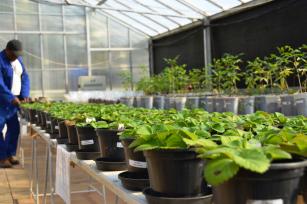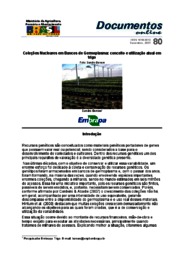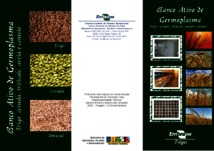Conservation, characterization and use of crop cereals genetic resources
Conservation, characterization and use of crop cereals genetic resources

Photo: PORPINO, Gustavo
Cereal such as wheat, rice, corn, maize, oats, sorghum, millets, triticale, and rye make up the base of human and animal foods and feeds, respectively. Many of these species contribute significantly to the sustainability of agricultural production systems in Brazil, generating jobs and boosting the country's economy. Collectively, these cultures add up to 19 millions of cultivated hectares and 47 million tons of produced grains, which is almost half of the country's total grain production. However, national production is still insufficient to fully supply the cereal demand, although the country is the third greatest corn producer, for instance. The deficit between internally produced grains and the market's demand puts Brazil in a position of great dependence of imported products. In this context, it is essential to increase the production of cereals and their quality, with the goal to practice a sustainable agriculture and be a more competitive market. To tend to these and other demands still to come, germoplasm banks show their importance, being responsible for the storage of a wide range of genetic material of the agricultural species mentioned. Today, Embrapa keeps, in germoplasm banks, something in the order of 100 thousand strains of cereal species. However, although the genetic diversity is considerably large, there is an evident lack of available information for interested parts, as well as little genetic stock available for: basic and advanced bio-prospection studies, researches on gene characterization, gene expression and their effects. It is important to promote the documentation, enrichment, maintenance, and disclosure of results obtained in scientific and technological researches on cereals. These should consist of strains with great genetic variability, duly characterized and appropriately organized, allowing optimal use of the available germoplasm and genes, and the products of their expression. In this sense, the activities developed in this project will essentially consist of: 1. Documentation and disclosure of germosplasms and available information to the country's scientific community; 2. Enrichment of the available genetic variability material, by means of systematic introductions and collection (done through a scanning system in the regions neglected so far) of germoplasm of the cultivated cereals and of native wild species; 3. Characterization and disclosure of: genetic resource archives with aggregated value, genes and products of their expression, including nuclear collections, character banks, and specific genetic stock; 4. Agronomical, phenological, morphological, morphometric, molecular, genetic, and cytological characterization of cereal germoplasm kept at Embrapa; 5. Maintenance of the available genetic variability through regeneration and systematic mutiplication of the conserved germoplasm.
/n
/n
Ecosystem: Amazonic, Extreme South, Atlantic Forest, Semi-mixed and seasonal forests, Mid-North, Pantanal, Caatinga Region and Mixed forests, Cerrados Region, Pinheirais Region
Status: Completed Start date: Thu Jan 01 00:00:00 GMT-03:00 2009 Conclusion date: Thu Dec 31 00:00:00 GMT-03:00 2015
Head Unit: Embrapa Wheat
Project leader: Tammy Aparecida Manabe Kiihl
Contact: tammy.kiihl@embrapa.br
Keywords: caracterização, coleta, conservação, diversidade genética, documentação, germoplasma


